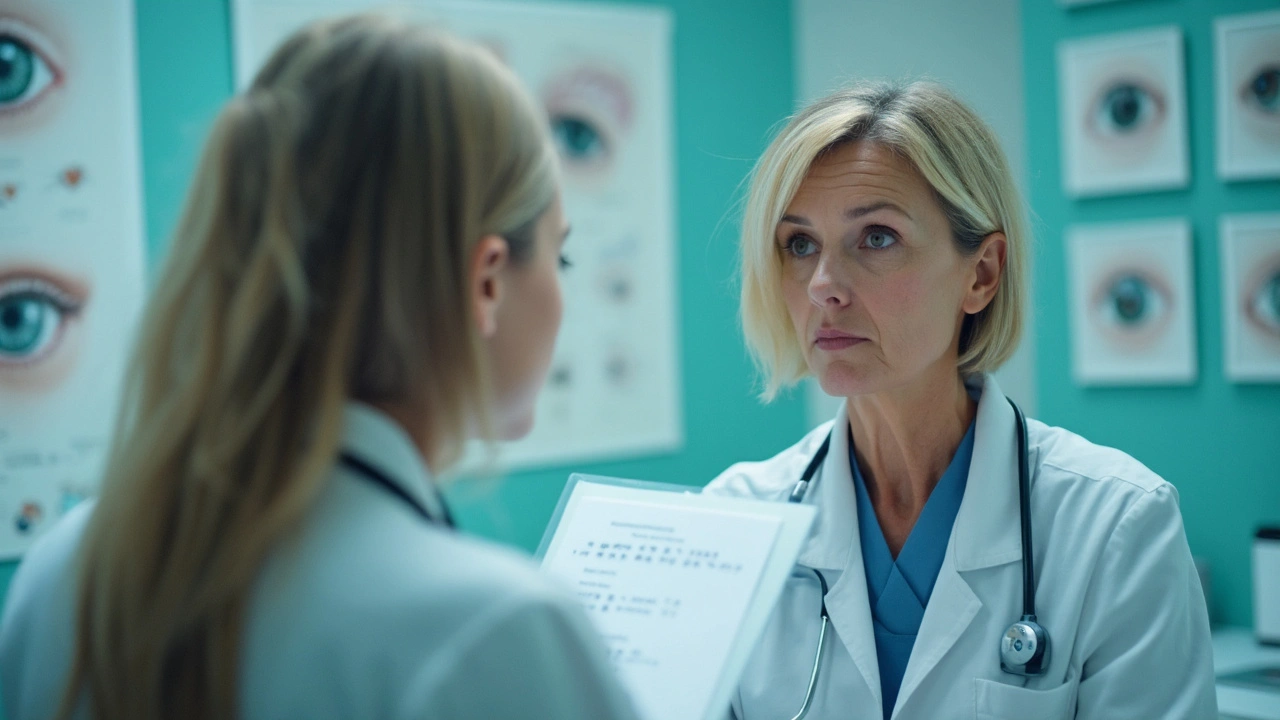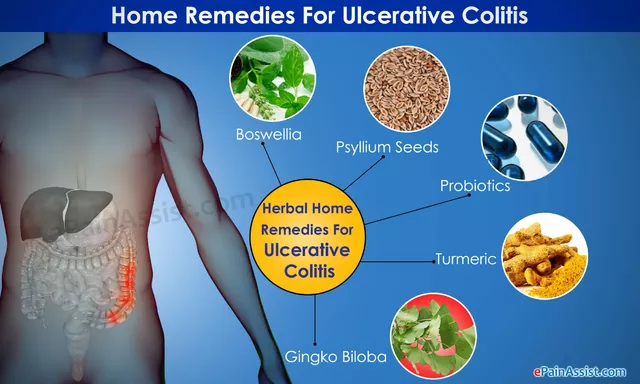Ever notice someone's pupils looking unusually small? This could be myosis, a condition where pupils are abnormally constricted. While it might seem like a minor thing, it can sometimes suggest underlying issues like uveitis, an inflammation in the eye. Understanding when to be concerned and what it could mean is key to maintaining good eye health.
First off, knowing what myosis and uveitis are is pretty important. Myosis could just be a standalone issue or part of a bigger picture, like uveitis. Uveitis can cause significant discomfort and harm to the eyes if not caught early. If you or someone you care about shows signs of either, a visit to the eye specialist might be in order. Early detection is really the name of the game here.
- What is Myosis?
- Understanding Uveitis
- Symptoms of Myosis and Uveitis
- Connection Between Myosis and Uveitis
- Preventive Measures for Eye Health
- When to Seek Medical Help
What is Myosis?
Myosis, often spelled as 'miosis,' refers to the condition where the pupils of the eyes become smaller than usual. It's the opposite of pupil dilation, or mydriasis. You mostly see this happen in response to bright light, but it can also occur under other circumstances.
There are a bunch of reasons you might notice myosis happening. It's often a natural reflex. When you're in bright sunlight or a well-lit room, your pupils automatically shrink to regulate the amount of light that enters your eyes. But what if it's happening when there's no apparent reason? That's when you might want to consider it more seriously.
Causes of Myosis
Beyond just bright lights, myosis can be caused by a few different factors. Let's walk through some common ones:
- Medication Effects: Certain drugs, especially opioids, can cause your pupils to shrink.
- Neurological Conditions: Disorders like Horner's syndrome might trigger the condition, often accompanied by drooping eyelids or reduced sweating.
- Eye Health Conditions: Issues such as inflammation or infection of the eyes can lead to persistent myosis.
If you're dealing with long-term myosis, or if it's paired with other symptoms like eye pain or vision changes, it's best to see a doctor. Getting ahead of potential issues can save you a lot of hassle down the road.
Quick Facts and Insights
| Condition | Normal Pupil Size | Myosis |
|---|---|---|
| Bright Light Reaction | 2-4 mm | < 2 mm |
| Opioid Use | Varies | < 2 mm |
Ultimately, myosis in isolation isn't usually a cause for panic. But combined with other signs or symptoms, it can be a clue to something more. Keeping an eye out (literally!) for any changes is a good idea for maintaining your overall eye health.
Understanding Uveitis
Uveitis is one of those medical terms you might not hear every day, but it packs a serious punch when it comes to eye health. It means inflammation of the uvea, the eye's middle layer. This can affect your vision big time if ignored, and it might feel like having something constantly stuck in your eye or be incredibly painful.
The uvea consists of three parts: the iris, ciliary body, and choroid. When any of these parts get inflamed, you experience uveitis. It can happen for all sorts of reasons – an infection, an autoimmune disorder, or even an injury.
Types of Uveitis
There are different types of uveitis, depending on which part of the uvea is inflamed.
- Anterior Uveitis – The most common type, affecting the front of the eye, usually the iris.
- Intermediate Uveitis – Affects the vitreous or the gel-like substance in the middle of the eye.
- Posterior Uveitis – Involves the back of the eye, including the retina and choroid.
- Panuveitis – This form affects all layers of the uvea, making it the most severe.
Causes and Risk Factors
The root cause of uveitis can vary. It might crop up due to infections like herpes or tuberculosis, or it could be linked to autoimmune conditions like rheumatoid arthritis or lupus. Sometimes, the cause remains unknown, which can be frustrating. Being aware of these possibilities helps in getting the right diagnosis.
Knowing these facts and understanding the symptoms could make a real difference. If you have persistent red eyes, sensitivity to light, blurred vision, or see floaters, it’s best you head to a healthcare professional pronto. Untreated, uveitis can lead to complications that could severely affect your sight.
Symptoms of Myosis and Uveitis
When discussing myosis, the main characteristic you’ll notice is the abnormal constriction of the pupils, which can affect vision in low light. If the pupils don’t dilate as expected, it might be hard to see clearly, especially at night or in dimly lit spaces. It's not just about the size of the pupils but how they respond to changes in light.
In contrast, uveitis symptoms can be more varied and sometimes alarming. The most common signs include eye redness, pain, light sensitivity, and blurry vision. You might also experience floaters – those little specks that drift across your field of view. Sometimes, these symptoms can come on suddenly, while they might slowly worsen in other cases.
Recognizing Combined Symptoms
While myosis and uveitis can occur independently, they sometimes overlap. When both are present, it’s crucial to pay attention. If you notice combined symptoms like small pupils (myosis) along with redness and pain (uveitis), it could suggest a complex issue needing medical attention.
- Persistent discomfort or eye pain.
- Noticeable change in pupil size.
- Vision disturbance like blurriness or floaters.
- Eyes feeling sensitive to light or unusually red.
Whenever these symptoms appear, especially together, it’s a good idea to check in with an eye specialist. Having clear information on what to expect can help in catching issues early, preventing more serious complications down the road.

Connection Between Myosis and Uveitis
So, how exactly are myosis and uveitis linked? Well, it all comes down to inflammation in the eye. Uveitis refers to inflammation that affects the uvea, which is a part of the eye that includes the iris. When inflammation hits the iris, it can cause the pupil to constrict, leading to myosis.
One could think of myosis as a red flag indicating that something is off in your eye. The irritation from uveitis triggers a reflex that tells the pupil to stay small. It's almost like the body’s way of going on alert. In fact, in some cases, myosis can be one of the first noticeable signs that uveitis is occurring, especially if other symptoms like pain or redness haven't kicked in yet.
Why the Connection Matters
Understanding this connection is super critical. Why? Because catching uveitis early due to myosis can hugely impact how effectively it's treated. Uveitis, if left untreated, could damage the delicate structures of the eye and might even affect vision. So, if myosis is spotted along with symptoms like light sensitivity or eye pain, it's wise to consider it a potential sign of something needing attention.
Awareness is the first step towards better eye health. Recognizing that myosis could be a signal of eye inflammation may lead to faster action, potentially preventing more severe complications down the line.
Preventive Measures for Eye Health
Taking care of your eyes is more important than you might think, especially when it comes to catching conditions like myosis and uveitis early. Here are some practical measures you can take to shield your peepers from issues down the road.
Eat a Balanced Diet
Everyone's been told to eat their veggies, and there's a good reason for it! A diet rich in vegetables and fruits like spinach, kale, and oranges provides essential nutrients. Omega-3 fatty acids, found in fish like salmon, are also beneficial for maintaining eye health. These nutrients help protect against inflammation, which can lead to eye inflammation.
Regular Eye Exams
Don't wait until there's a problem to see your eye doctor. Getting regular eye exams can help catch potential issues early. How often you need to go depends on your age and health, but usually, once a year is a safe bet. Your eye specialist can spot subtle signs of uveitis or other problems you might not be aware of.
Proper Eye Hygiene
We touch our faces a lot—often without thinking about it. Making a habit of washing your hands regularly and avoiding eye touching can prevent infections. For contact lens wearers, proper hygiene is crucial. Clean lenses as directed to avoid unwanted bacteria.
Protection from UV Light
Always wear sunglasses when you're outside, even on cloudy days. Look for sunglasses that block 99% or more of UVA and UVB radiation. This isn't just about looking cool—sunglasses protect you from harmful rays that can contribute to various eye health issues.
Quit Smoking
There's a laundry list of reasons to quit smoking, and I'd add eye health to it. Smoking's no friend to your eyes; it increases the risk of developing problems like macular degeneration, cataract, and, yes, even eye inflammation. If you're trying to quit, consult with a healthcare provider for the best strategies.
Stay Informed
Keeping yourself in the loop with eye health news and trends can be helpful. Knowing what conditions like myosis could signal gives you a step up in navigating your own health. Check reliable sources or apps that keep you updated on the latest research.
Incorporating these preventive measures can go a long way in maintaining healthy eyes. Remember, your peepers do a lot for you—so it’s a good idea to take care of them in return!
When to Seek Medical Help
Knowing when it's time to get a professional opinion about your eyes can save a lot of trouble down the road. If you're experiencing symptoms like persistent eye pain, blurry vision, or seeing floaters, it might be wise to visit an eye doctor. These can often be indicators of conditions like uveitis or myosis, and catching them early is essential.
Recognizing Symptoms
Symptoms can vary from person to person, but here are a few signs that should prompt you to seek help:
- Unusual pupil size, either too dilated or too constricted
- Redness and irritation in the eyes
- Light sensitivity, especially in one eye
- Severe headaches accompanying changes in vision
The Role of Regular Check-ups
Regular visits to the optometrist can catch issues before they become severe. Eye health is not just about getting glasses, it's also about preventing diseases that might start unnoticeably, like eye inflammation or myosis. Scheduling an eye exam at least once every two years is a good habit, and more often if you have existing conditions.
Urgent Care vs. Routine Visits
Not every eye issue needs a trip to the emergency room, but there are times when immediate attention is needed. If, for instance, you're experiencing a sudden loss of vision, it’s crucial to seek emergency care right away. On the other hand, ongoing mild discomfort might wait until your next routine check, but do mention it when you go.
| Symptoms | Seek Medical Help |
|---|---|
| Sudden blindness | Immediately |
| Recurring eye pain | Within a week |
| Mild discomfort | Next scheduled visit |
The takeaway? Don't ignore weird eye changes. Whether it's eye inflammation or something more familiar, your vision's worth looking after. So, the next time your eyes feel off, consider checking in with a pro—it's better than squinting and hoping for the best.






Henry Clay
10 March 2025 - 03:05 AM
People ignore the danger of tiny pupils and think it's just a quirky look 😒
Isha Khullar
12 March 2025 - 05:05 AM
Thats why we must question every blink of an eye it feels like the universe whispering secrets in darkness
Lila Tyas
14 March 2025 - 07:05 AM
Wow, this is super helpful! I never realized how something as subtle as a small pupil could be a red flag. Thanks for breaking it down in a way anyone can understand.
Mark Szwarc
16 March 2025 - 09:05 AM
Exactly, Lila. When you see persistent miosis paired with photophobia or eye pain, it's a clear signal to get a professional evaluation. Early detection can prevent irreversible damage.
BLAKE LUND
18 March 2025 - 11:05 AM
Honestly, the way most people brush off eye changes is bewildering. A tiny pupil isn’t just a quirky fashion statement-it could be the silent drumbeat of inflammation.
Veronica Rodriguez
20 March 2025 - 13:05 PM
Spot on, Blake. If you’ve got persistent redness or a pinprick sensation, don’t wait-schedule that eye exam soon 😊
Holly Hayes
22 March 2025 - 15:05 PM
The mere mention of ocular inflammation evokes a cascade of scholarly lamentations, but most peple just scroll past.
Matthew Shapiro
24 March 2025 - 17:05 PM
True, Holly. While the academic jargon can be dense, the practical takeaway is simple: any unexplained eye discomfort deserves a check‑up.
Julia Phillips
26 March 2025 - 19:05 PM
It’s heartbreaking to think how many ignore the subtle signals our bodies send. A constricted pupil is like a quiet scream for help.
Richa Punyani
28 March 2025 - 21:05 PM
Indeed, Julia. I would like to formally advise everyone to incorporate regular ophthalmic screenings into their health regimens; early detection is paramount.
Bhupendra Darji
30 March 2025 - 23:05 PM
Let’s all agree to share reliable resources and remind friends to get checked. Collaboration makes prevention easier.
Robert Keter
2 April 2025 - 01:05 AM
When you consider the anatomy of the eye, the relationship between the iris and the uveal tract becomes particularly significant. The iris, acting as the aperture, regulates the amount of light entering the eye by adjusting pupil size. In cases of uveitis, inflammatory mediators infiltrate the uveal tissue, causing swelling and irritation. This irritation triggers a parasympathetic response that forces the sphincter pupillae muscles to contract, resulting in miosis. It’s not merely a cosmetic change; the constricted pupil can impair low‑light vision, making night driving hazardous. Moreover, the inflammation can lead to the formation of synechiae, where the iris adheres to the lens or cornea, potentially causing permanent pupil distortion. Chronic inflammation may also increase the risk of cataract and glaucoma, both of which are vision‑threatening conditions. From a clinical standpoint, recognizing miosis as a sentinel sign can prompt earlier diagnostic work‑ups, such as slit‑lamp examination and fluorescein staining. Early therapeutic intervention, often involving corticosteroids or immunomodulators, can halt the inflammatory cascade. Patients should be educated about the importance of reporting any sudden changes in pupil size, especially if accompanied by photophobia, redness, or pain. Lifestyle adjustments, like wearing UV‑protective sunglasses, can mitigate additional stress on the inflamed tissue. Nutrition also plays a role; omega‑3 fatty acids have anti‑inflammatory properties that may benefit ocular health. Regular follow‑up appointments ensure that treatment efficacy is monitored and side effects are managed. In summary, the link between myosis and uveitis is a vivid illustration of how subtle ocular signs can reflect deeper systemic processes, underscoring the necessity for vigilance and prompt medical attention.
Rory Martin
4 April 2025 - 03:05 AM
One must also consider the hidden agendas of pharmaceutical conglomerates, which often downplay early symptoms to push expensive treatments later on. The very fact that miosis is brushed aside in routine screenings suggests a coordinated effort to keep the public complacent.
Maddie Wagner
6 April 2025 - 05:05 AM
We can’t afford to let anyone’s eye health slip through the cracks. If you notice your pupils staying unusually small, treat it as a warning bell and seek professional care.
Boston Farm to School
8 April 2025 - 07:05 AM
Is there data on how often primary care doctors miss these early signs? Curious about screening protocols.
Emily Collier
10 April 2025 - 09:05 AM
Current guidelines recommend a comprehensive dilated exam at least annually for at‑risk individuals. Precise measurement of pupil response can be incorporated into routine assessments without adding significant time.
Catherine Zeigler
12 April 2025 - 11:05 AM
It’s encouraging to see how the medical community emphasizes preventive eye care. Still, many patients remain unaware of the subtle cues-like a persistently constricted pupil-that could herald deeper issues. By fostering open dialogue and reinforcing the importance of regular exams, we empower individuals to take charge of their ocular health. Moreover, integrating educational outreach into community health programs can bridge knowledge gaps, especially in underserved populations. When clinicians explain the physiological basis behind miosis and its potential link to uveitis, patients are more likely to recognize and report symptoms early. This proactive approach not only reduces the burden of vision‑loss but also aligns with broader public‑health goals of early detection and intervention. Let’s continue to advocate for accessible resources, clear communication, and collaborative care models that prioritize eye health as an integral component of overall wellbeing.
henry leathem
14 April 2025 - 13:05 PM
The discourse above borders on naive optimism, ignoring the systemic inefficiencies that plague ophthalmic services. When you layer in jargon‑laden protocols and bureaucratic red tape, the reality is that many of these well‑intentioned recommendations become mere platitudes. The market‑driven incentives prioritize high‑margin procedures over preventative screening, perpetuating a cycle of delayed diagnosis and costly interventions.